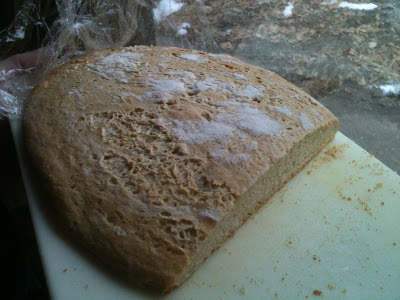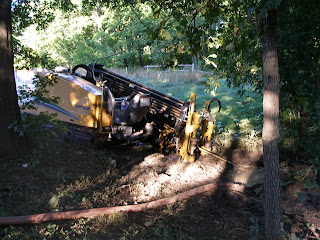What comes to mind in observing these differences is the value of my own garden. One might compare the value of garden produce to that at Cub Foods, yet the quality of the food and organic nature (if grown organically) of the yield would be better compared to organics of a natural food store. I would price my garden produce at the organic rate. Another facet unrealized by many is the pretax nature of garden produce. If we shop at a food store, we have already paid taxes on the money we spend. From 15 to 28% has already come out of our pocket before we step in the store. That fact alone, of tax-free food, makes a personal organic garden even more valuable.
Talking with Travis at Seward Market I found he feels organic foods are more sustainable than convention foods. I questioned him on the growing practices of some organic farms and he admitted that many large organic farms in California are not sustainable but are still organic. This is a conflict in organic labeling where produce meets government requirements that are related to chemical cultivation and production rather than the care of the land. He stated that the produce is sometimes not as visually pleasing and has a shorter shelf life yet is better quality in taste and nutrition. He also stated that organic is more labor intensive than non-organic crops. Travis believes that the organic produce is better grown, better for you and tastes much better. I would suggest that picking time and soil ecology of produce affects the taste more than organic techniques. Picking green produce to ripen during shipping withholds the nutrition and flavor of crops better held in the field. However, local produce is usually picked at its peak for immediate sale.
Having eaten some great produce from my own organic garden, I know the value of good soil and the quality that comes from being a good steward of the land. Picking fresh tomatoes or beans taste far superior to anything in the store. As far as store bought organic food, I can only say it is slightly better than non-organic since the distance and handling is the same. Locally grown “farmers market” produce is the next best to my own. A CSA box (from a subscription with a produce grower) seems to come close to our garden quality, but the expense and inconvenience diminishes its worth. Our produce is tax free and here already. I do encourage people wanting to garden to try a CSA first and see what they might like to grow as the garden soil is prepared for the next season. This also helps them prepare for cooking garden produce they will grow. We do however prepare the spring garden area with soil prep and autumn sheet mulching.
Taking organics to the commercial level is a daunting task that has enticed many start-up farmers. In the nineteen-seventies organic gardening was the realm of the counter culture, which had rejected modem-farming techniques. Roger Browne, of Rising Sun Farms in Wisconsin, started his organic venture in the late seventies and today still farms a small acreage. He grows produce on a five-year rotation of crops on one acre. Roger’s reputation is well known in organic circles. He has one of the oldest organic farms in the Midwest.
Roger prides himself on his marketing for a descending order of consumers. His best produce goes to high profit retail sales at Farmers Markets. Restaurants take the slightly less perfect cuttings for a lower but predictable price. The family uses edible produce, not suitable for sale, and the least palatable items go to the chickens and compost pile.
Roger had a few observations from his years of farming. First, he said the price gap between organic and convention produce is narrowing due to transportation costs and the cheap labor in other countries. His price for organic produce is not going up and is driven by the buyers who advise him. Secondly, his expenses for organic farming does not include chemicals or fertilizer, but he counts 60% of chicken feed costs as a fertilizer expense since it ends up that way. Lastly, Roger sees integrating farm systems as his best technique in leveraging his resources. Roger found that stacking the functions of the chickens and the needs of the gardens reduced the inputs for the growing season. Previously He would plant Winter Rye and have to plow it twice in the spring before planting. Now he turns it once and then allows the chickens to eat the bugs, break up the clods and remove any errant seed. He has 50 laying hens, 100 meat chickens, and 40 turkeys doing the work. The Turkeys concentrate more on the insects and disturb the soil less.
Roger is a devoted organic farmer and would not change his techniques if prices fell to conventional levels. His production costs are minimal due to his integrated systems and the presence of interns and visitors willing to help and learn. Roger holds workshops and promotes systems thinking as all elements in his farm system are integrated, non-liner relationships.


Comments